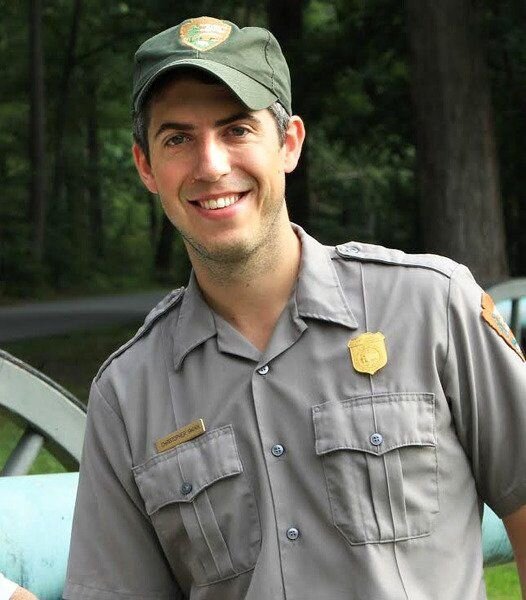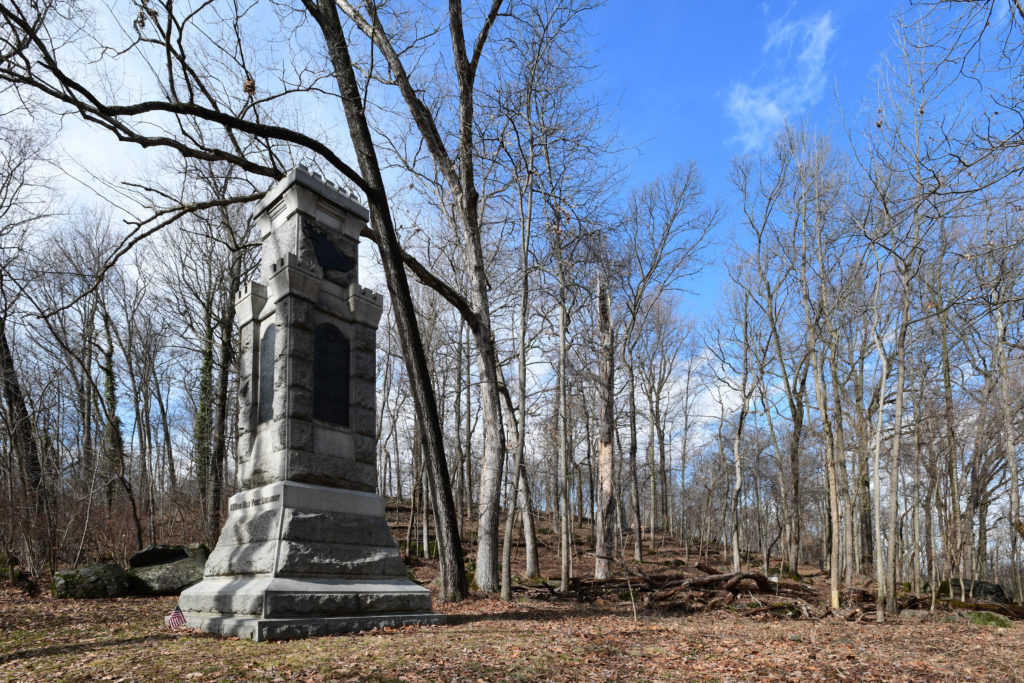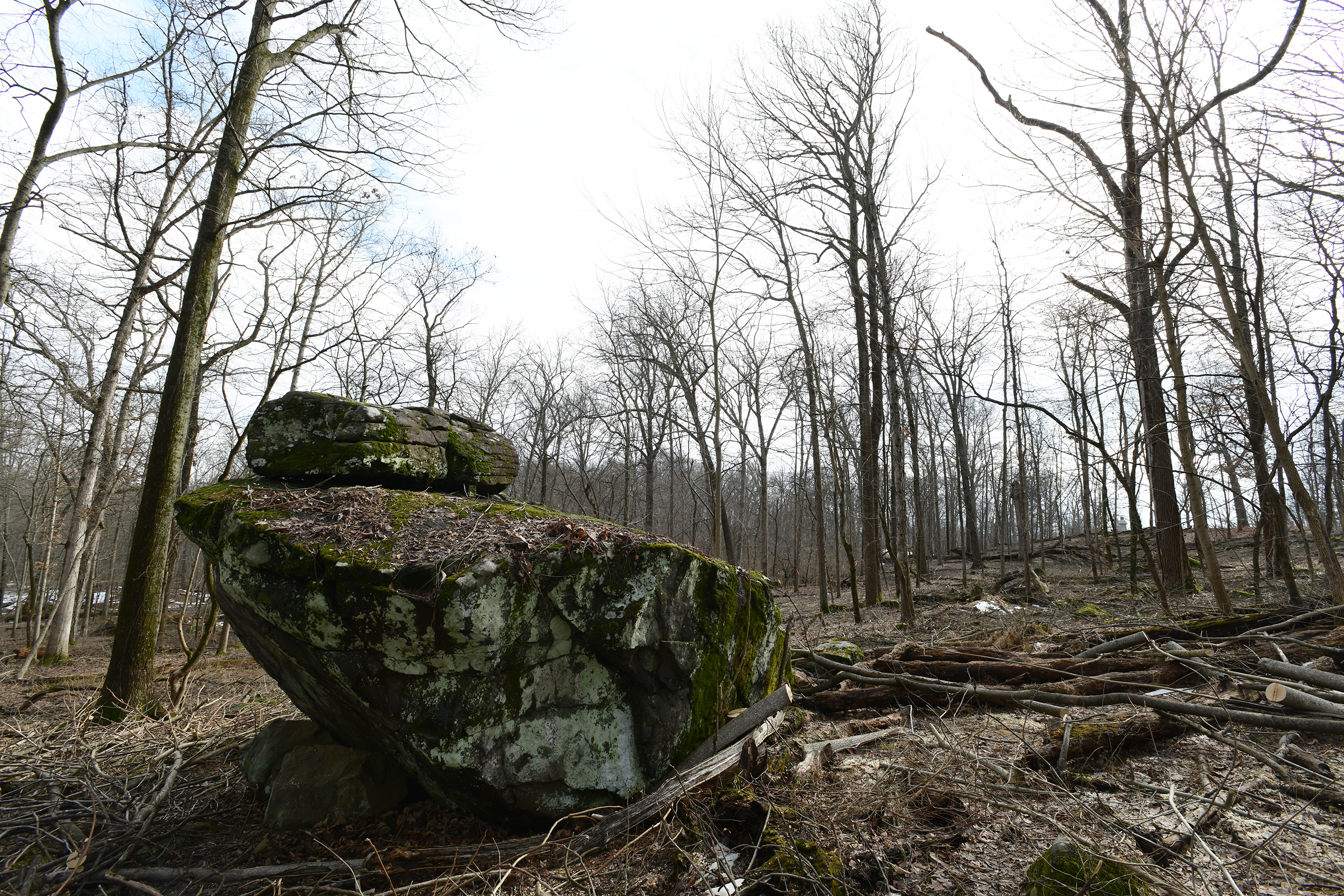As the tumult of 2020 faded into the new year, Gettysburg National Military Park announced an exciting new project to rehabilitate the Culp’s Hill area of the battlefield. During the post-battle years, the remnants of Union breastworks and visibly bullet-shattered trees made the spot a popular stop for veterans and visitors seeking a glimpse of understanding about the fierce battle that raged here in July 1863. Natural intrusions drastically changed the landscape and claimed much of the evidence of battle, and by the turn of the 20th century it had become one of the least-visited areas on the battlefield. The park intends to change that.

Christopher Gwinn, Gettysburg’s Chief of Interpretation and Education, said it’s one of many rehabilitation projects the park is undergoing as the battlefield continues to advance its interpretation of the events that happened here in July 1863, their role in the larger context of the Civil War, and the evolving understanding of the conflict’s place in the history of America.
Can you tell us what the Culp’s Hill project will entail?
In a lot of ways it’s an extension and continuation of the larger battlefield rehabilitation program that’s been going on at Gettysburg since the late 1990s and early 2000s, where we’re trying to take the battlefield as it exists today and as much as we can rehabilitate it to how it would have appeared in 1863. We use rehabilitate very specifically—it’s not a reconstruction. I’m sure your readers are familiar with some of the work we have done removing nonhistoric vegetation, adding fence lines, adding orchards where there would have been orchards in 1863.
Now, working with our nonprofit partner, the Gettysburg Foundation, along with a very generous donor, we will take 18 acres of the hill and try to remove manually a lot of the underbrush so hopefully what you’ll get is a woodlot that is a lot more reminiscent of the 1863 landscape. Then you can stand on the Union line on the summit of the hill and get a sense of what they would have seen on July 2.
Another aspect is creating a trail down to the famous rock outcropping that is depicted in the illustrations by Edwin Forbes, who worked for Frank Leslie’s Illustrated Newspaper, along with three new interpretive signs that will hopefully do a better job of telling the Culp’s Hill story.
We’ve already begun the Culp’s Hill project and we’re hoping to have a ribbon cutting on July 2 of this year, to signify the end of the first phase of the project. Then it will be our job to see how the landscape is responding to the changes we have made, how visitors are interacting with the new signage and new trails. That will provide us with a lot of information about how we will proceed.
With so many opportunities and plans for rehabilitation and reinterpretation, how does the park choose which projects to prioritize?
Well, collectively as a park, we look at our projects, we create an annual work plan, we create a larger strategic plan, and back in the 1990s, the park created a general management plan which we have been using as kind of a blueprint for years. But it’s a little bit of alchemy to be honest. What can we get funding for? What do we have the staffing to manage? What’s going to be sustainable, too. That’s a big part of it. That’s one of the challenges with the rehabilitation project. We can go and make a forest into a field, but the field still wants to be a forest. Working at Gettysburg, there is sort of an embarrassment of riches, in terms of all these things that are worthy projects that in and of themselves have the potential to change how visitors experience the battle and battlefield. The Warfield House is a great example of that. It’s a project that’s been in the works for years. Same thing with the larger wayside project.

Can you tell us about the larger wayside project?
It has its origins in the years when the National Park Service took over the battlefield in the 1930s. At that point, the Park Service was relatively new to managing historic sites. The battle was also going from a living memory of the veterans who fought there to being an event that was not. We were losing a primary way in which people could learn about the battle: from the participants who fought in it.
So, the Park Service developed a wayside project at Gettysburg where they went out and marked significant locations, allowing visitors new means in which to understand the battle. The last time they were really
updated was in the late 1980s, early 1990s. Since that time, the park has changed geographically. We have hundreds of acres we didn’t have before, and new trails. I’d like to think interpretively that we’ve expanded the story that we tell. So we have an opportunity to reinvent those panels and offer something I think is graphically much improved.
Also, textually we touch on a lot of themes that we didn’t touch on 30 or 40 years ago. There were previously 64 different waysides out on the battlefield. We’ve designed 95. We’re replacing all of the ones that were previously on the landscape, but we’re adding new ones, too. It’s been five years in the works now and it’s just starting to make its appearance out on the landscape.
If you had to choose one sign to tell people to make sure to check out, what would it be?
That’s tough. I don’t have any one. There are some that I am very proud of because of the subject matter. So I’ll give you a few and I would choose them for different reasons. There is one on West Confederate Avenue that will be placed about where the North Carolina monument is and it will introduce visitors to this idea of Confederate monuments. There will be some pretty fundamental questions addressed. How did these get here? Who placed them here? What is this all about? And the hope is that it prepares visitors for what they’re going to see, and helps them contextualize it. I’m proud of that one.
There’s one down at Devil’s Den that talks about how the geologic forces that created the battlefield played a role in how the battle was fought. One of the things I want people to understand is, when you come to a battlefield like Gettysburg, there are different layers of history here, from the very recent and all the way to the Jurassic era of pre-human history. We touch upon that now. And there’s a sign on Powers Hill that delves into aspects of the battle—in this case, friendly fire—that will hopefully get visitors to think differently about Civil War combat.
As we continue to study the Civil War, there’s a lot of talk about how the war is never really over. How do you think that new ideas reshape the interpretation of the battlefield?
I think a lot of visitors to the battlefield and a lot of Americans in general have a very static view of history. History is history. The battlefield is the battlefield. It’s preserved and unchanging. Period. And, of course, that’s not the case. It’s always evolving. I think every generation has an opportunity and an obligation to reexamine its past and to reinterpret it. Especially as we learn more and expand our knowledge and our understanding of not just the past, but who we are as Americans. That’s going to impact itself on places like Gettysburg, the National Mall, Valley Forge, and such. What visitors are seeing as we add new signs, add new trails, rehabilitate the James Warfield House, is just the next evolution of the Gettysburg story. And it’s going to continue evolving long after I’m gone, as it was evolving decades before I arrived. I think we’re at a kind of a pivot point, though, as to how we present the Gettysburg story. It’s getting much more complex. We’re taking Gettysburg out of that silo, and connecting it to all these other things.
As Americans continue to have debates about how we remember the Confederacy, as we continue to debate the issues of race in America and citizenship—the Gettysburg story can be a big part of that. Hopefully we’re creating a battlefield where visitors can go to experience the 1863 story, to walk in the footsteps of the men who fought here 150 or so years ago, but we’re also offering them a place to talk about these big issues and reflect on who we are and where we’re going.





